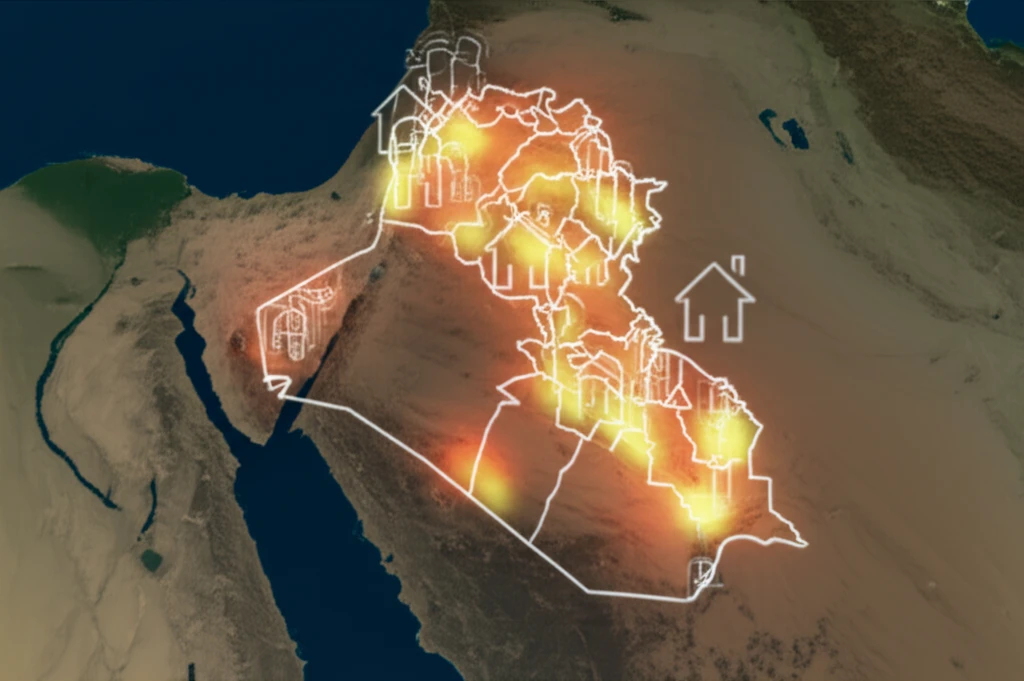
Iraq's Hidden Crisis: Mapping Malnutrition and Poverty Hotspots
"Discover how spatial analysis reveals the unequal distribution of acute malnutrition and household income, pinpointing areas most in need of targeted interventions."
For years, Iraq has faced significant disparities in health and economic well-being across its governorates. While national-level data provides a broad overview, it often masks critical local variations. A 2004 study published in the International Journal of Statistics and Probability sought to address this gap by investigating the spatial patterns of acute malnutrition (AM) and household income (HI) in Iraq.
Historically, certain governorates have suffered disproportionately due to factors like centralized government investment in specific urban centers (Baghdad, Basra, and Nineveh) and geographic proximity to conflict zones. This raises a crucial question: Are there spatial patterns to AM and HI in Iraq, and if so, can the pattern of income explain the pattern of malnutrition? This study uses advanced mapping and statistical techniques to uncover these hidden relationships.
By using spatial analysis, the research provides a more nuanced understanding of the problem. It identifies specific geographic clusters where malnutrition is most prevalent and examines the correlation with household income levels. This approach moves beyond broad generalizations, offering policymakers a powerful tool for creating targeted interventions and allocating resources where they are needed most.
Unveiling Iraq's Malnutrition Hotspots: A Spatial Analysis

The study, led by Faisal G. Khamis and Ghaleb A. El-Refae, used cross-sectional survey data collected in 2004, covering 18 governorates in Iraq. The researchers employed a multi-stage approach, beginning with mapping AM and HI using quartiles to visually identify potential disparities. Then, they applied spatial econometric techniques, including Global and Local Moran's I statistics, to quantify the spatial autocorrelation – the degree to which values at one location are similar to nearby locations.
- Mapping: Visual representation of AM and HI levels across governorates using different shades to indicate quartiles.
- Global Moran's I: A statistical measure to determine if there is overall clustering of high or low values for AM and HI.
- Local Moran's I: Identifies specific geographic clusters (hotspots) of high or low AM and HI within individual governorates.
- Wartenberg's Measure: Assesses the spatial correlation between AM and HI, indicating if they tend to be geographically associated.
Turning Data into Action: A Path Towards Equitable Health in Iraq
This study underscores the critical need for targeted interventions to address acute malnutrition in Iraq. By identifying specific geographic clusters, policymakers can move beyond generalized approaches and allocate resources more effectively. This means tailoring interventions to the unique needs and circumstances of each region, considering not only household income but also other socio-economic and environmental factors that may contribute to malnutrition.
While the study did not find a direct spatial correlation between AM and HI, this does not negate the importance of poverty reduction strategies. Instead, it suggests that the relationship is more complex and mediated by other variables. Future research should explore these mediating factors, such as access to clean water, sanitation, healthcare, and education, to develop more comprehensive interventions.
Ultimately, addressing malnutrition requires a multi-faceted approach that combines targeted interventions with broader efforts to improve socio-economic conditions and strengthen healthcare systems. By using spatial analysis to inform policy decisions, Iraq can move towards a more equitable distribution of health and well-being for all its citizens. Regular monitoring and updated studies are also essential to track progress and adapt strategies to changing conditions.
